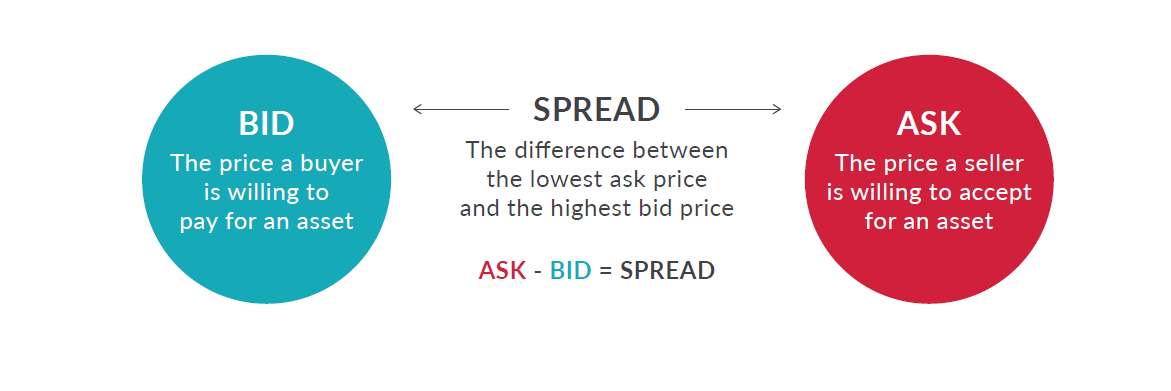The difference between the bid (sell) and ask (buy) prices of any instrument is known as the spread, hence the term bid ask spread.
When the spread of a financial instrument is tight, meaning that there is only a small difference between the ask price and selling price, it is cheaper to trade. In comparison, if the prices are further apart, or the spread is wide, the instrument will cost more to trade.
Market liquidity has a significant effect on spread. During times of high liquidity, an instrument’s spread is typically low. The reason for this is that, as your trade will easily be matched, there is no need for transaction costs to be high. On the other hand, if liquidity is low, spreads will often widen significantly due to the difficulty in pairing your trade with another trader in the market.
Having a strategy is crucial. For example, if you want to buy or sell as soon as possible, you can place a market order and take the stock prices offered by the market.
Examples of Bid Ask Spreads
A good example of a bid-ask spread is if the current bid price for a pair such as the eur/usd is 1.6835 and the current offer price is 1.6838, then you can you can buy at 1.6835 and sell at 1.6838. The spread between the asking price (lowest price at which someone will sell) and the bid price (highest price at which someone will buy) in this case is 3 pips.
Another example; highly liquid instrument in the stock market, like the EUR/GBP currency pair, often have very low spreads of less than one pip. In forex, a pip is the smallest increment in which a currency pair can move and is usually the fourth decimal place in the price of the pair (in pairs featuring the JPY, it is the second decimal place). Sellers often receive lower prices while buyers pay higher prices. Mutual fund buyers and sellers are not affected by bid-ask spreads as the fund is priced once daily and they all receive the same price.
For example, the spread on EUR/GBP could be 0.8 pips, meaning the buy price for the currency may be 0.87887, while the sell price is 0.87879. This means that the pair costs very little to trade. Bid-ask spreads can also be onerous if you are dealing with thinly-traded securities. The bid-ask-spread in such a scenario compensates the market maker if buyers cannot be found for the shares and prices vary before these buyers are found. Market makers are large firms that set bids to both buy and sell a stock.
In comparison, an exotic currency pair that has low liquidity, like the GBP/ZAR, can often have a significantly higher spread and current market price. As the trading volume on the South African rand (ZAR) is generally very low, it can be difficult to match orders on the market. This means that, for example, the buy price could be 18.01400, while the sell price is 17.99300, giving a spread of 210 pips and making the pair more expensive to trade.
If you are considering a stock purchase you have to be confident that the stock's price will advance such that it can overcome any obstacles to profit as presented by the bid-ask-spread. Bid ask spreads are especially high to unknown securities on a given day and can include small cap stocks.
The significant effect that liquidity has on trading costs and market volatility is one of the main reasons why, for beginners entering the market for the first time, it is recommended to stick to trading the most liquid instruments.
Read our next article: Technical analysis demystified continuation patterns





